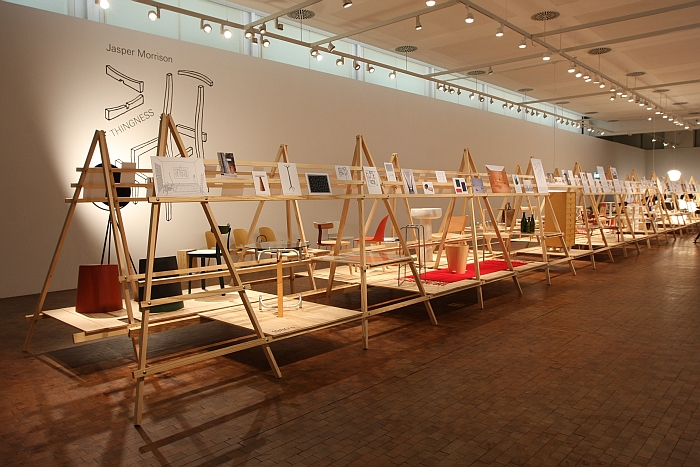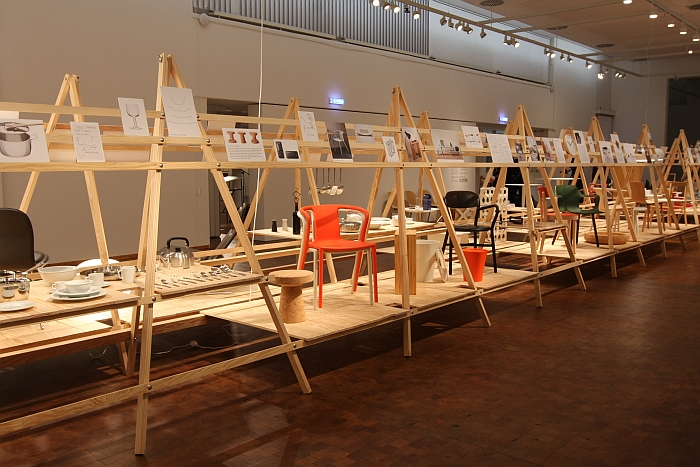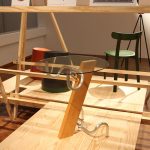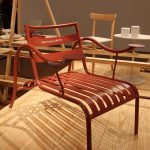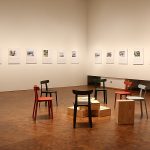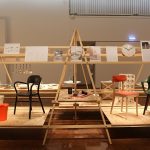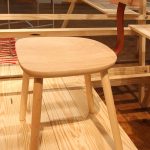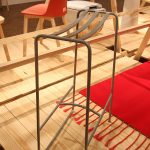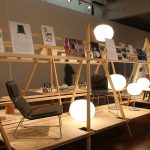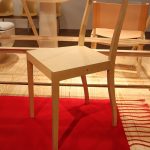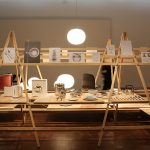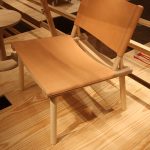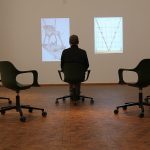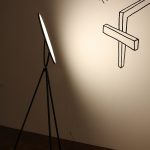Jasper Morrison. Thingness at the Bauhaus Archiv Berlin
Thingness. Noun. [ˈthiŋ-nəs] The quality or state of objective existence or reality1
Thingness. Exhibition. [ˈthiŋ-nəs] A comprehensive Jasper Morrison retrospective currently on show at the Bauhaus Archiv Berlin.
Originally conceived by and presented at the Centre d’innovation et de design, CID, Grand-Hornu, Belgium, Jasper Morrison. Thingness presents a chronological excursion through three decades of Jasper Morrison design. We first saw Thingness at the Museum für Gestaltung Zürich back in February 2016, and so for the basics, background and biography we refer you dear reader to our Zürich post. The displayed objects aren’t entirely the same, and there a couple of other changes, but in principle…..
That Thingness is now being shown in Berlin is more than appropriate, for in many respects Jasper Morrison’s career as a professional designer begins with the friendships he forged and experiences he had in 1980s West Berlin. And Thingness “opens” with a reference to just one of those: the exhibition Kaufhaus des Ostens – Department Store of the East. Arising from a seminar at the Hochschule der Künste, the contemporary Universität der Künste, Berlin, supervised by Jasper Morrison together with Andreas Brandolini and Joachim Stanitzek, Kaufhaus des Ostens concerned itself with Readymades and the general misappropriation of industrial products as a critique on contemporary design culture. In addition to his ever wonderful Flower Pot table – a table whose base is constructed from flower pots of ever diminishing size, and a design later taken on by Cappellini – Kaufhaus des Ostens also featured Morrison’s truly genial Handlebar Table, the first object in the Thingness timeline. Although created in London, its combination of bicycle handlebars, wood and glass meant it fitted perfectly into the exhibition concept, as a work it is representative of the way Jasper Morrison understood and approached design in the early 1980s, arguably also the reason why he went to Berlin to team up with Brandolini and Stanitzek, and thus for us is always the ideal place to start exploring Jasper Morrison’s oeuvre.
Despite Jasper Morrison’s denials of any Post-Modern tendencies, the spirit of Post-Modernism was very present in his early, formative, years: be it through the realisation that what Ettore Sottsass et al were producing in Italy meant you could do whatever you wanted, freeing the young creative mind from the dogmas of formalism, or the Neue Deutsche Design protagonists he came into contact with during his time in Berlin, including Christian Borngräber, one of the leading theoreticians behind NDD, and who in 1988 invited Morrison to create an installation in context of Berlin’s tenure as European Capital of Culture. The resulting “Some New Items for the Home, Part I” sending a very strong signal of Morrison’s developing understanding of design, and also standing as a clear – as in both uncluttered and unequivocal – answer to the extremes of Post-Modernism. At the Thingness opening Bauhaus Archiv Director Dr Annemarie Jaeggi used the word leise – quiet – to describe Morrison’s work. A quiet, reserved, elegant response to the screaming, vulgar, brashness of Post-Modernism and Memphis? We can buy into that. In addition “Some New Items for the Home, Part I” also resulted in the Plywood Chair, Jasper Morrison’s first product for Vitra.
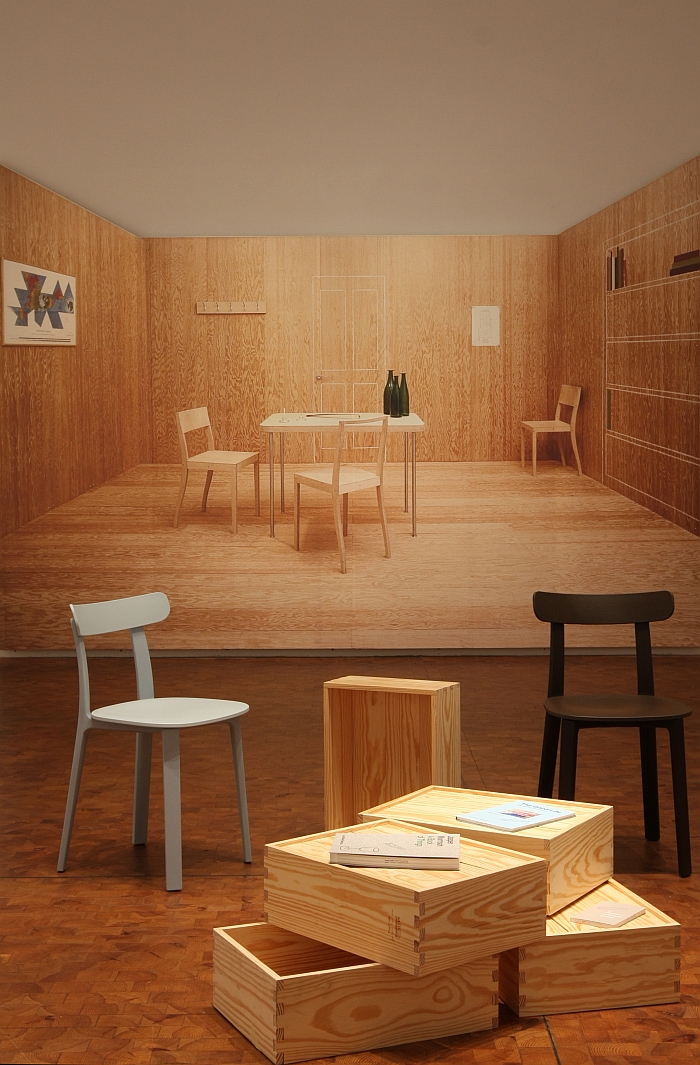
“Some New Items for the Home, Part I”, featuring the Plywood Chair, and in the foreground the All Plastic Chair for Vitra. Thus Jasper Morrison’s first and most recent chair designs for Vitra, as seen at Jasper Morrison. Thingness, Bauhaus Archiv Berlin
For us one of the more interesting products of Jasper Morrison’s time in Berlin is the essay The Poet will not Polish which was published in the Kaufhaus des Ostens catalogue. Yes, we know, we mention it every time we write about Jasper Morrison, but no, we make no apology therefor.
Essentially describing an average day in the life of what Morrison refers to as the “new world constructor”, a day, which aside from alcohol, billiards and girls, involves an awful lot of absent minded urban exploration, in which context Morrison writes, “whatever he’s thinking of he maintains an acute sensibility to his surroundings, an awareness which edits from what he sees vital ideas and perceptions relevant to his work. He looks for objects and materials which possess a certain poetic quality which raises them above the more consciously crafted structural devices employed by his counterpart, the old world constructor.”2 A petition for the Readymade approach which was the basis of the Kaufhaus des Ostens project, the text for us also neatly sums up Jasper Morrison’s approach to design.
On the one hand the observational. Jasper Morrison is clearly man who is very aware of what is around him, who has just such an “acute sensibility” and who observes his surroundings in a manner we fear future generations will simply be unable to do. With all the formal and aesthetic chaos that will inevitably bring. How Jasper Morrison edits his surroundings to pick out poetic qualities can not only be experienced in Thingness in context of the presentations of his The Good Life: Perceptions of the Ordinary and A World Without Words photographic projects, but also in the way many of his works reflect this poetry of the everyday object: the antique chair without a seat which became his Thinking Man’s Chair; the observation of how the shadow of a Viennese café table top affected his perception of the table leg forming the basis of the Atlas System for Alias; the rubber shoe inlay evolving into the Pad chair collection for Cappellini; or simply driving through a Spanish cork forest leading to a desire to work with the material.
But perhaps much more subtly is the way Morrison responds to that what is there. The Poet will not Polish contains a clear reference to the Handlebar Table with the assertion that “Marcel Breuer seeing a pair of bicycle handle-bars decided to make chairs using the same industrial process. The new world constructor seeing a pair of bicycle handle-bars decides to use them as they are and save himself the trouble and expense of bending the tube.” Wandering through the three decades of Jasper Morrison’s work one understands that in addition to directly misappropriating trivial industrial objects Morrison has also a fine skill for reconsidering standards: the Basel Chair for Vitra is Morrison’s take on untold generic wooden coffee house chairs; Fionda for Mattiazzi Morrison’s indoor version of a Japanese camping chair; the Trattoria Chair for Magis his, well, traditional Trattoria Chair. Rather than creating something new Jasper Morrison has created something which evolves the standard without destroying that which is essential. Maintains the integrity. Or as he notes in The Poet will not Polish, “If he goes home without a headache he will amuse himself with experimenting, constructing and generally working at his task of creating a new elegance”
Jasper Morrison ends The Poet will not Polish with words only the self-confidence of youth can pen, “So the days pass and the constructor grows older, but his mind stays young because he has avoided the drudgery and banishment of ideas that full time employment encourage. He does not live in fear of the manufacturer because he is both the creator and producer of ideas and as such has no need to satisfy mass market requirements but only to realise his vision of the new world and enjoy himself.” While satisfying the mass market has become, at least relatively, important for Jasper Morrison, we don’t for a minute believe he lives in fear of the manufacturer. And while Jasper Morrison has aged, his work hasn’t. Viewing Thingness it is very hard to identify an object that looks out of date, which has aged badly. Testament surely to Jasper Morrison’s leise design.
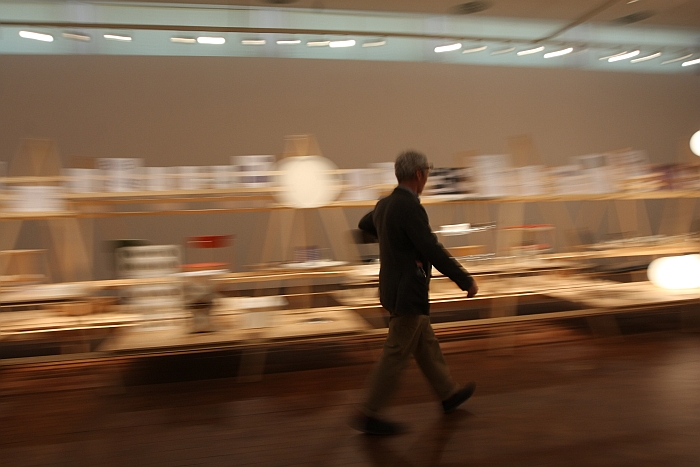
Jasper Morrison. Thingness @ Bauhaus Archiv Berlin. A stroll through thirty years of Jasper Morrison design
Based on an exhibition design concept conceived by Michael Charlot, Thingness is an eminently accessible, open exhibition in which short texts, photographs, essay and sketches help explain both the genesis of the objects on display and also Jasper Morrison’s approach to and understanding of his work. Yes, you do have to be interested in Jasper Morrison’s approach to and understanding of his work to get any real enjoyment from Thingness, it is very much a monographic exhibition; but anyone with an interest in contemporary design must have an interest in Jasper Morrison. Even if you don’t particularly like what he does.
When Thingness was presented in Zürich it featured a section known as MyCollection which presented objects selected by Jasper Morrison from the Museum für Gestaltung Zürich’s collection. Somewhat regrettably no such section is included at the Bauhaus Archiv presentation; regrettably because through Jasper Morrison’s reflections on works other than his own, MyCollection genuinely allowed a much deeper view of the man and his work. The disappointment however is more than made up for by the amount of space which the exhibition has been given to fully unfold. For all the The Good Life: Perceptions of the Ordinary and A World Without Words presentations which in Zürich stood a bit in the shade, in Berlin they shine.
A state of affairs in which Fate played a central role.
Under normal conditions the Bauhaus Archiv would be unable to show an exhibition of the scope of Thingness, the temporary exhibition space being far too constricted.
However these aren’t normal conditions. And as the Bauhaus Archiv prepares for the start of construction of its extension, the exhibition spaces are being cleared: and so where normally the history of Bauhaus would stand, stands the history of Jasper Morrison. A not unironic state of affairs when one considers that one of Jasper Morrison’s earliest projects saw him misappropriate Marcel Breuer. Now he’s replaced him. In how far Jasper Morrison’s work can be considered an evolution of the Bauhaus ideals and the Bauhaus ethos is something we leave the visitors to decide for themselves.
Jasper Morrison. Thingness runs at the Bauhaus-Archiv/Museum für Gestaltung, Klingelhöferstrasse 14, 10785 Berlin until Monday October 23rd
Full details, including information on the supporting programme can be found at www.bauhaus.de
1 https://www.merriam-webster.com/dictionary/thingness Accessed 21.03.2017
2, and all further quotes Jasper Morrison, The Poet will not Polish, in Kaufhaus des Ostens, Catalogue, c kdo + verlag zweitschrift, Hannover 1984
- Handlebar Table by Jasper Morrison, as seen at Jasper Morrison. Thingness, Bauhaus Archiv Berlin
- Thinking Mans Chair, as seen at Jasper Morrison. Thingness, Bauhaus Archiv Berlin
- “The Good Life Perceptions of the Ordinary”, as seen at Jasper Morrison. Thingness, Bauhaus Archiv Berlin
- Jasper Morrison. Thingness @ Bauhaus Archiv Berlin
- T1 by Jasper Morrison for Maruni, as seen at Jasper Morrison. Thingness, Bauhaus Archiv Berlin
- Slatted Stool by Jasper Morrison for SCP, as seen at Jasper Morrison. Thingness, Bauhaus Archiv Berlin
- Lowpad for Cappellini & Glo-ball for Flos, as seen at Jasper Morrison. Thingness, Bauhaus Archiv Berlin
- Plywood Chair by Jasper Morrison for Vitra, as seen at Jasper Morrison. Thingness, Bauhaus Archiv Berlin
- Jasper Morrison. Thingness @ Bauhaus Archiv Berlin
- December Chair by Jasper Morrison for Nikari, as seen at Jasper Morrison. Thingness, Bauhaus Archiv Berlin
- “A World Without Words”, as seen at Jasper Morrison. Thingness, Bauhaus Archiv Berlin
- Superloon by Jasper Morrison for Flos, as seen at Jasper Morrison. Thingness, Bauhaus Archiv Berlin
Tagged with: Bauhaus Archiv Berlin, Berlin, Jasper Morrison, Thingness
